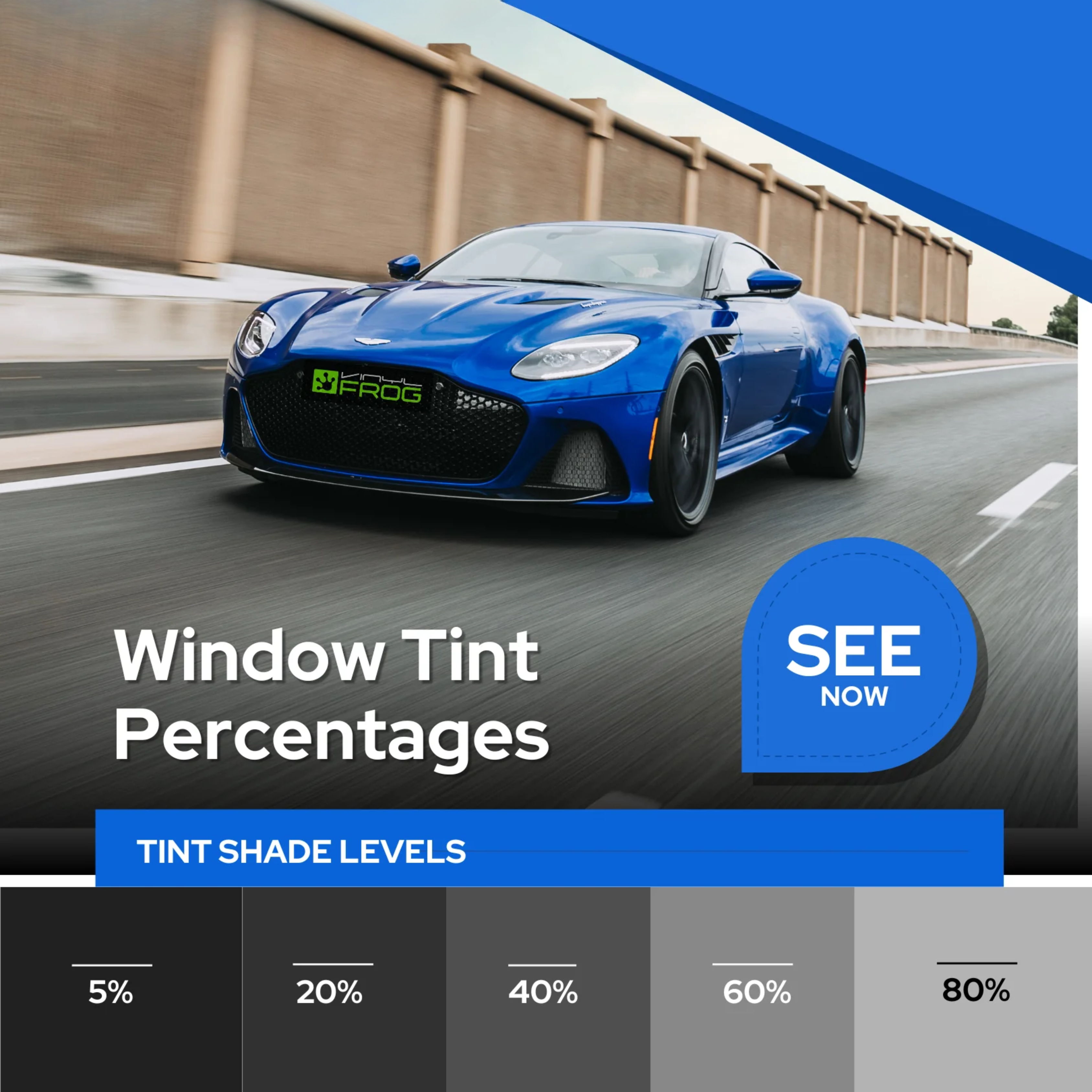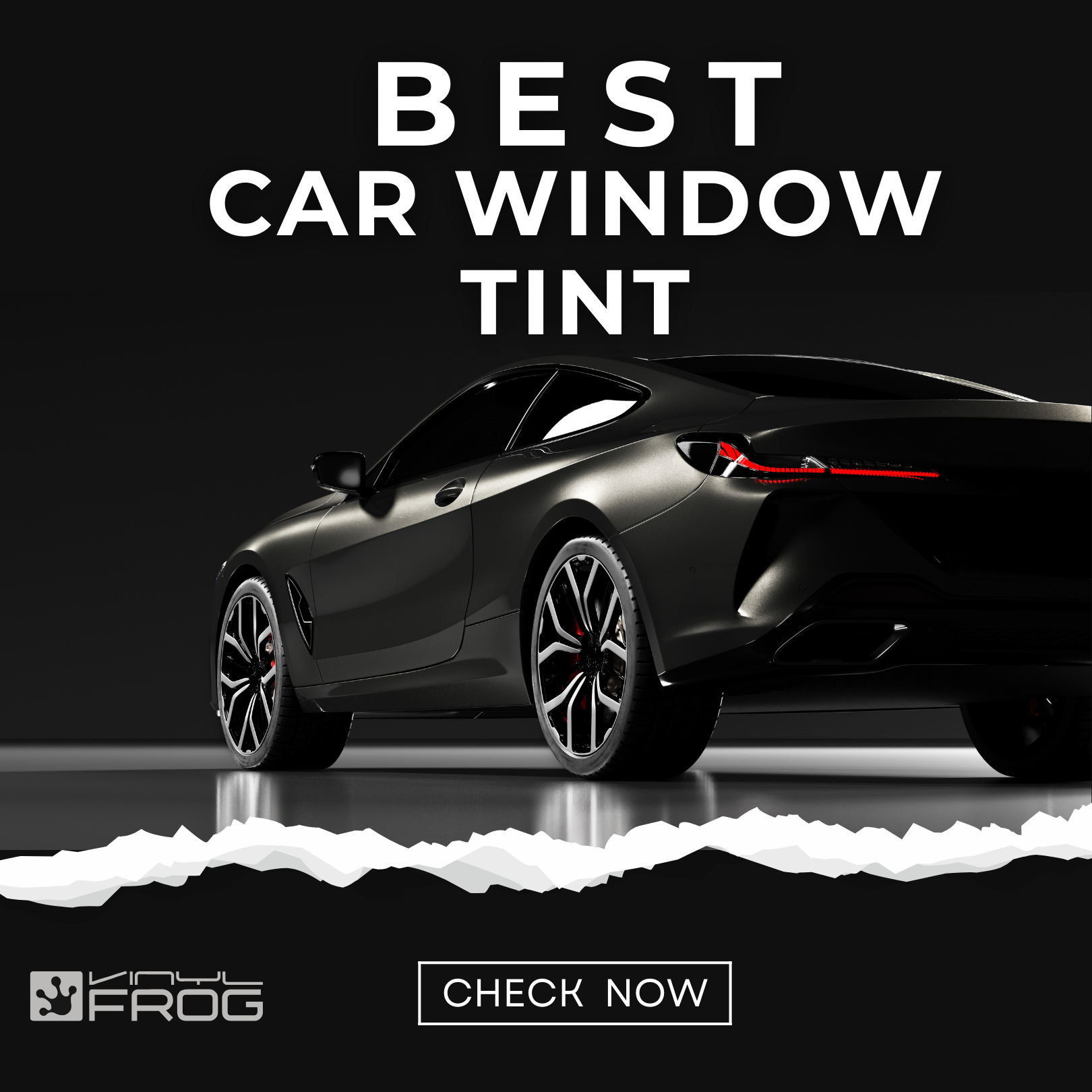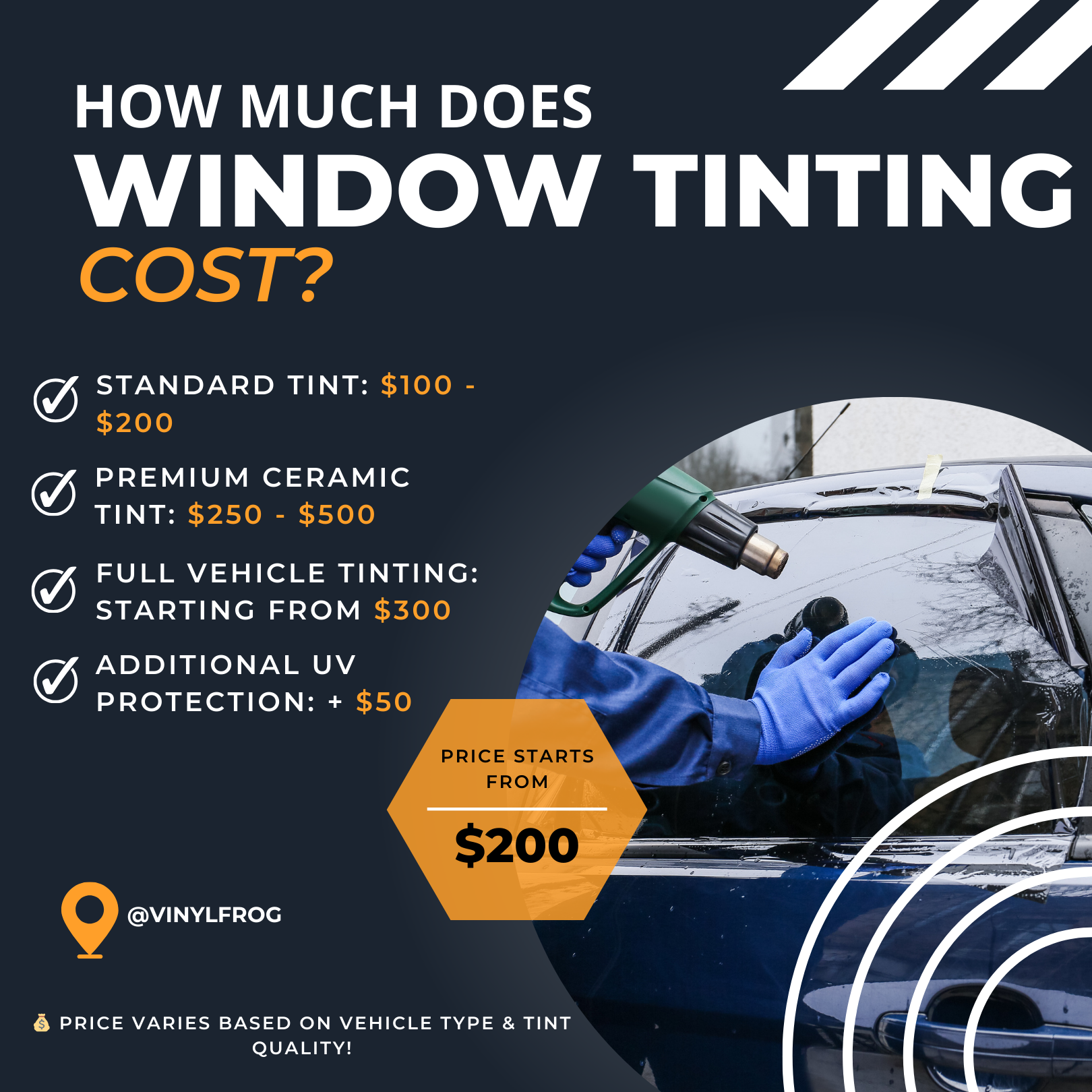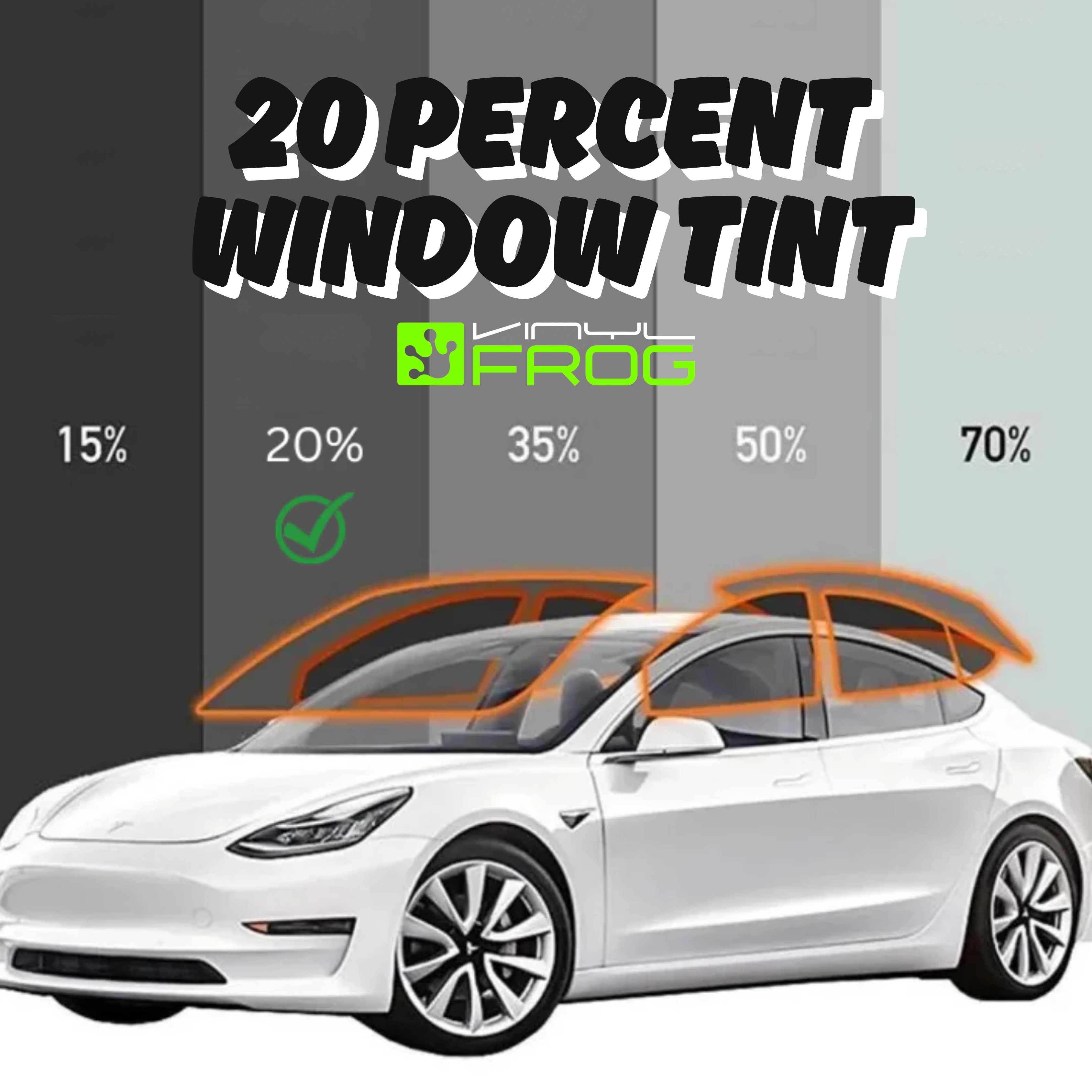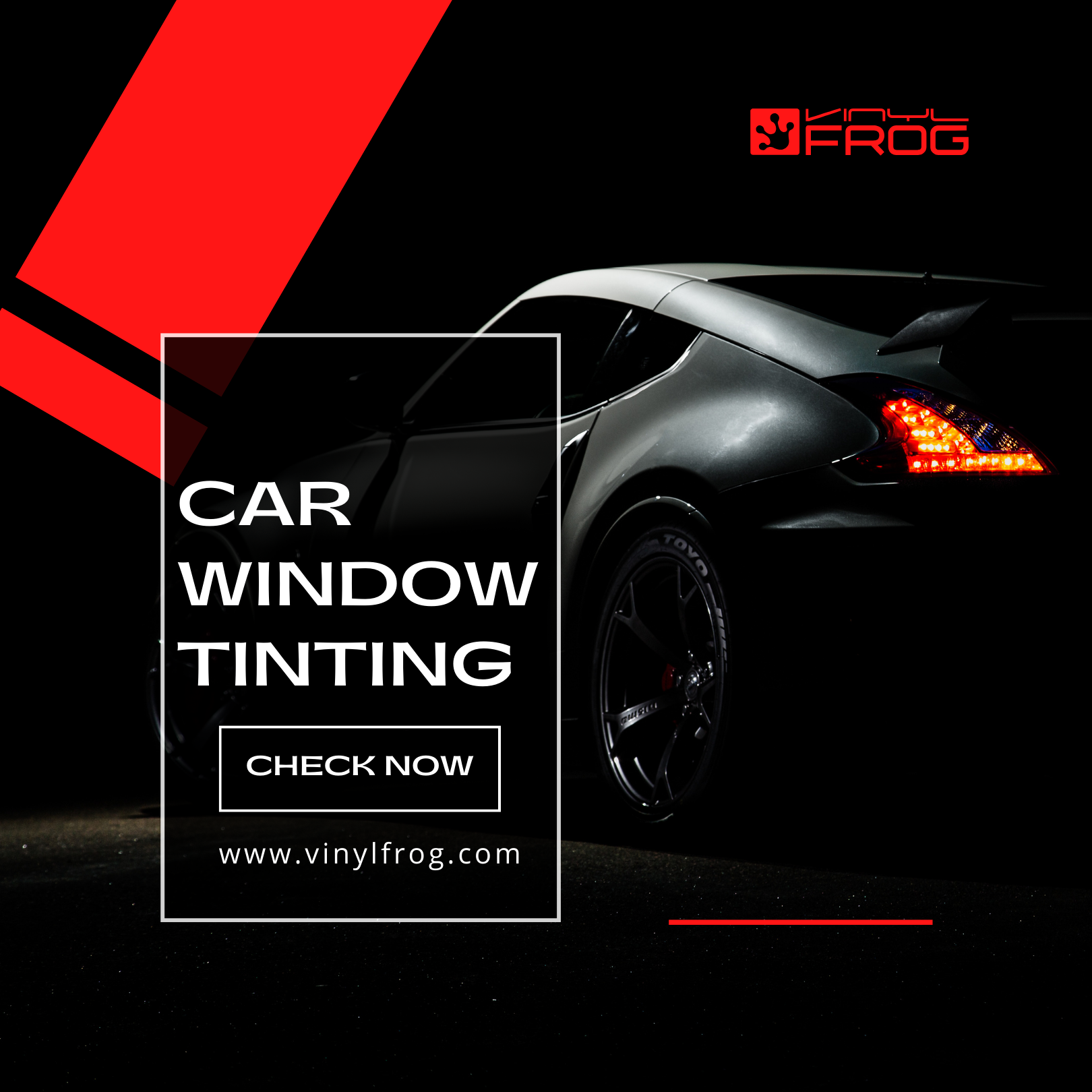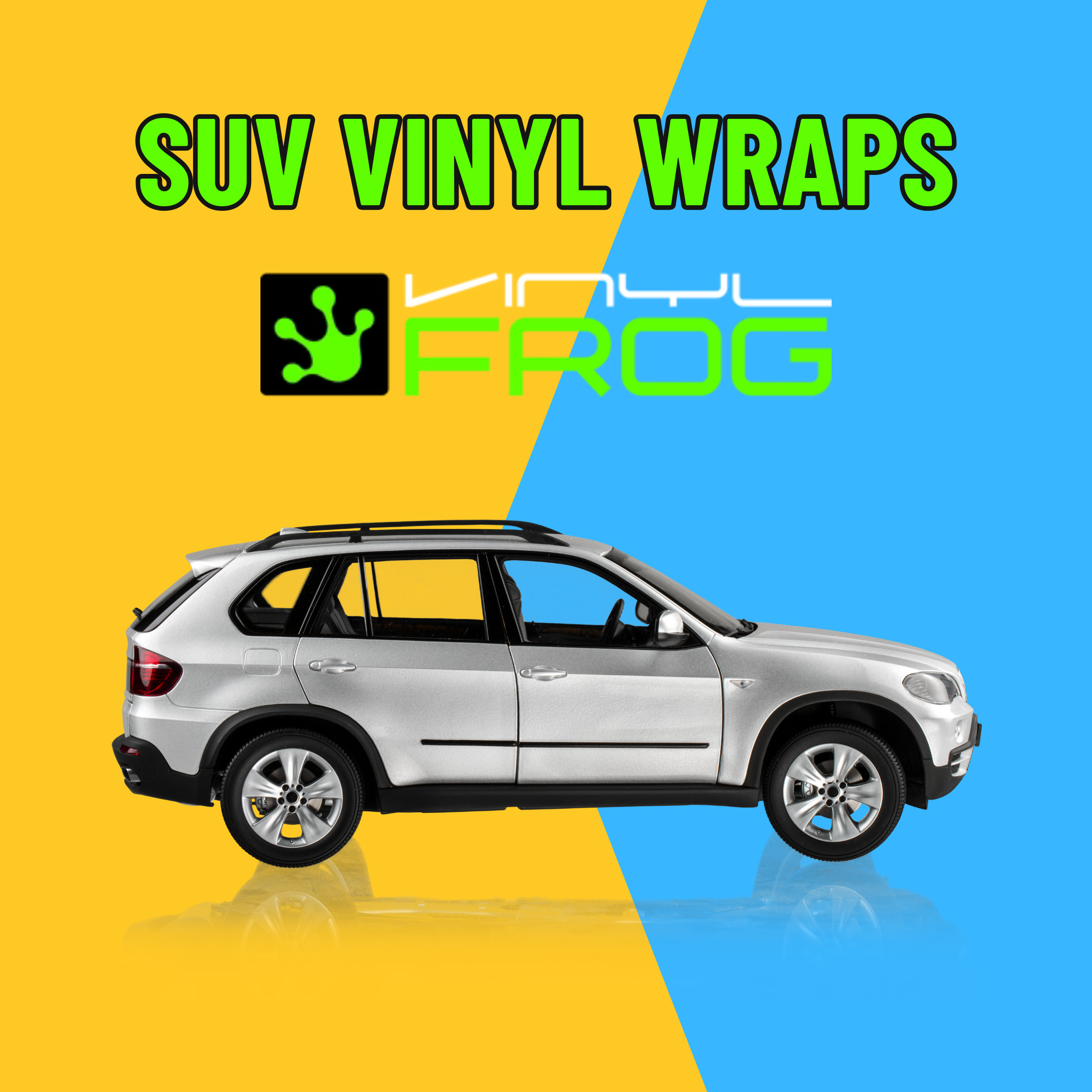Updated By Vinyl Frog On April 23, 2025
35 Percent Window Tint vs 20 Percent

When it comes to enhancing the functionality and protection of your vehicle, window tints are highly recommended by experts in the automotive industry. These come in different levels of darkness that are measured by the Visual Light Transmission (VLT) percentage. At times, choosing between two tint levels becomes quite a dilemma.
We present to you the comparison between 35% and 20% window tint so you can better understand their differences and decide which one best suits your needs. Generally, 35 Percent VLT window tint is considered to be better than 20 Percent. This is because the latter is darker in comparison, hindering visibility in low light conditions and may not be a viable option for your vehicle.
While 35% tint is often considered the safer choice, many people also opt for 20% VLT for its privacy. Let's delve deeper to explore the contrasts between these two car window tints, ultimately answering the question: Which one is better?
What Is 35% Tint?
When you opt for 35% window tint, it means that only 35% of the light can pass through the window, while the remaining 65% is blocked. As a result, your vehicle's windows will appear darker, providing a certain level of privacy.
However, it is important to note that 35% tint allows for relatively easy visibility during the day. It falls within the medium darkness range, positioned between the lowest option of 5% (extremely dark) and the highest option of 70% (almost transparent).

While it offers a decent amount of privacy during the day, it's worth mentioning that visibility through 35% tinted windows is possible at night. This aspect appeals to some individuals, but others may have varying preferences regarding nighttime visibility.
Advantages Of 35% Tint Windows
There are quite a few benefits of installing 35 percent window tint on your vehicle. It is considered to be an ideal tint by many. Let’s see what it has to offer.
- Protection: 35% tinted windows provide a protective barrier for both you and your vehicle's interior by blocking a significant portion of harmful UV rays. This helps prevent sun damage to your skin and the fading or deterioration of your interior upholstery and dashboard.
- Temperature Control: It effectively reduces the amount of heat that enters your vehicle. By blocking a substantial portion of solar energy, it helps keep the interior cooler, providing a more comfortable driving experience, particularly in hot climates.
- Glare Reduction: This VLT percentage of window tint significantly minimizes glare from the sun as well, improving visibility and reducing eye strain. This is particularly beneficial when driving during bright and sunny conditions, as it enhances safety and comfort.
- Privacy Enhancement: Opting for 35% tinted windows adds an element of privacy to your vehicle. The darker appearance of the windows makes it more difficult for others to see inside, deterring potential theft by keeping your valuables hidden from view.
- Compliance with Laws: 35% tint typically adheres to laws and regulations governing window tint percentages in most of the states. This ensures that you can enjoy the benefits of tinted windows without running afoul of legal requirements.
Disadvantages Of 35% Window Tint
This VLT percentage has its downsides as well though they are quite insignificant:
- Limited Nighttime Privacy: Despite offering privacy during the day, 35% tinted windows may still allow for relatively easy visibility into the vehicle at night. This can compromise privacy and security, especially in well-lit areas or when the vehicle is parked. If you put on the light inside the car, one can clearly see through the tinted windows.
- Cost: The 35% window tint can be a significant investment especially if you are opting for the best quality ceramic one. The overall cost depends on factors such as the size of your vehicle, the quality of the tint film, and the labor required for installation. It's important to consider your budget before opting for this tint percentage.
What Is 20% Window Tint?
20% window tint refers to a film that allows only 20% of light to pass through, blocking 80% of it. This results in a significantly darker appearance compared to 35% tint, as less sunlight is allowed inside the car.
It's important to note that 20% tint is actually illegal in many states in the US and you might get in trouble with the law enforcement authorities especially if you have installed this tint on the front windows of your vehicle. The primary reason behind this restriction is the potential risk it poses to visibility. The darker tint can hinder the driver's ability to see clearly, especially during nighttime or in low-light conditions.
However, some states may permit the use of 20% tint on the back windows and rear windshield of a vehicle. These areas are considered to pose less risk to the driver's visibility compared to the front passenger seat and driver's window. Additionally, the darkness of the tint can make it difficult to see through the windows at night, depending on the ambient lighting conditions.
Pros Of 20% Tint Windows
- 20% tint provides a higher level of privacy for your vehicle, making it harder for others to see inside.
- The darker appearance of 20% tint adds a sleek and stylish look to your vehicle.
- In certain states, such as those that permit tinted back windows and windshield, you may still be able to enjoy the benefits of 20% tint on specific windows.
- The darker nature of the 20% tint makes it more challenging for others to see into your vehicle during nighttime, offering an extra layer of privacy and security.
Cons Of 20% Tint Windows
- 20% tint is considered illegal in most states across America, as it can impede visibility and pose safety risks for drivers.
- The darker tint can limit the driver's visibility, particularly in low-light conditions or at night, increasing the potential for accidents or difficulty in seeing road hazards.
- While some may appreciate the aesthetics of a darker window tint, it's important to note that 20% tint can significantly reduce the amount of light that enters the vehicle, potentially affecting the overall brightness and visibility inside.
35% Window Tint vs 20% – What Are The Differences?
When comparing 35% and 20% window tints, several key differences become apparent. We all know that both these window tints have quite a few benefits. Not only do they shield your valuables from prying eyes, but they also serve as a crucial defense mechanism.
They play a significant role in blocking harmful UV rays from the sun, acting as a shield similar to sunscreen for your car but it cannot be denied that the variations between these two percentages are significant.
Difference In Darkness
The most noticeable distinction lies in the darkness of the tints. 20% tint is inherently darker than 35%, allowing less sunlight to pass through. This can be a common misconception, as people may assume that 35% tint is darker. However, the truth is that 20% tint is darker because it only permits 20% of light to enter, while 35% tint allows 35% to pass through.

Legality Of Window Tints
Another difference arises in the legality of these tints. While 35% tint is legal in almost all states across the US, most of them have prohibited 20% window tint. This restriction stems from valid concerns about visibility impairment caused by darker tints.
However, it's essential to explore your state's regulations, as there may be loopholes or allowances for tinting specific windows while restricting others to maintain visibility.
Variation In Safety Parameters
Safety considerations come into play when evaluating these tint percentages. The lighter 35% window tint offers better driving visibility due to increased light transmission through the windows. On the other hand, the darker 20% tint significantly reduces the amount of light passing through, resulting in poorer visibility. Consequently, the reduced visibility associated can pose risks and make driving more dangerous for both the driver and passengers.
The differences between 35% and 20% window tints lie in their darkness, legality, and impact on safety. Understanding these distinctions can help individuals make informed decisions when choosing the appropriate tint percentage for their vehicle.

Privacy Concerns
There is a difference between the level of privacy you get with both these window tints. If this is your main concern then a darker 20% tint will be the right option. The 35% window tint allows in a moderate amount of light, making it relatively easy to see through both from the inside and outside of the tinted windows. It provides a balance between privacy, heat reduction, and visibility.
A 20% window tint offers increased privacy. It reduces visibility from both inside and outside. This means that the interior of a vehicle will be significantly darker, making it harder for people to see inside. Objects and people may be less visible through the tinted windows, especially in low-light conditions.
What Percentage Of Window Tint Is Illegal - 35% or 20%?
The legality of window tint percentages varies across different states and regions in the United States. While specific laws can differ, it's important to comply with the regulations in your area. Failure to do so may result in fines or the requirement to remove the window tint.
For example, in Nevada, front side windows must have a minimum tint percentage of 35%. Anything below that is considered illegal. However, the backseat side windows can have any level of tint. 20% window tint is illegal in most of the states especially on the front two windows on either side of the driver. You cannot have this tint percentage on the front windshield as well above the AS-1 line.

It's crucial to research and understand the specific window tinting laws in your location before installing tint on your vehicle. Non-compliance can lead to fines and potential removal of the tint. Additionally, even if the tint falls within the legal limits, a police officer may still request its removal if they deem it affects visibility or poses a safety concern.
If a dispute arises regarding the legality of your window tint, the vehicle owner typically needs to appear before a judge to present their case. The judge's decision will determine whether the tint needs to be removed or if it can remain installed.
Ultimately, staying informed about local laws and regulations is essential to ensure compliance and avoid any legal consequences related to window tint percentages.
Frequently Asked Questions
35% Window Tint vs 20% - The Final Verdict
It is better to install 35% window tint due to its numerous advantages and the fact that it is considered legal in most of the states. However, the final choice between 35% and 20% window tint ultimately depends on your specific needs and preferences. Both options have their advantages to keep in mind but most importantly, remember to consult local laws, consider your visibility needs, and weigh the pros and cons of each tint percentage before making a decision.
Window tint is not only a style enhancement but also a functional feature that can provide protection against UV rays and heat. Whether you choose 35% or 20% tint, prioritize safety, legality, and your own comfort when deciding. Ultimately, the best window tint percentage is the one that aligns with your goals, meets legal requirements, and enhances your overall driving experience.









